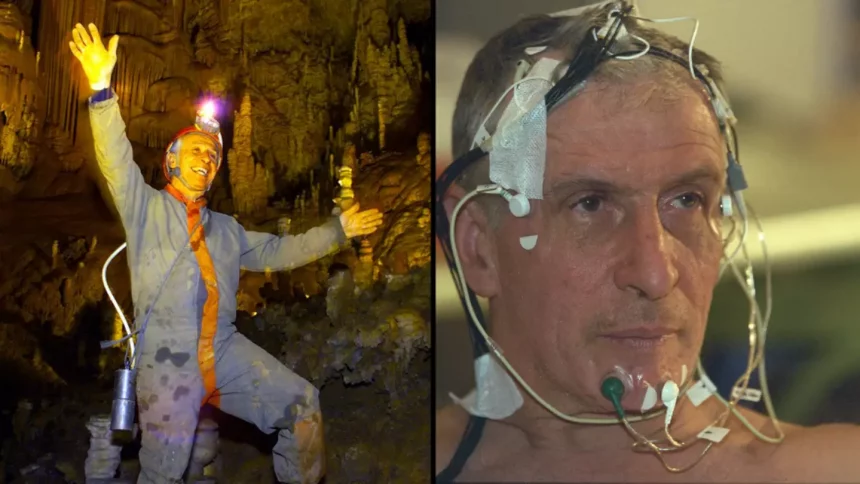Michel Siffre’s groundbreaking experiment conducted in the depths of a cave offers a captivating insight into the malleability of human perception and the resilience of the human spirit. In 1962, driven by a sense of curiosity and the spirit of exploration akin to the space race era, the young French explorer embarked on a daring journey to unravel the effects of time deprivation on the human body. His findings, which laid the foundation for the field of human chronobiology, continue to shape scientific studies and astronaut training programs even today.
Siffre’s venture into the unknown was not merely an act of survival, but a deliberate scientific exploration into the ways in which time absence could alter human biological rhythms. Secluding himself 130 meters below the earth’s surface in the Scarasson cave of the Ligurian Alps, armed only with a torch and unwavering determination, he set out to live unbound by the confines of a clock. What he discovered during his two-month isolation upended existing theories about biological rhythms and showcased the remarkable adaptability of the human body when disconnected from traditional time markers.
The insights gleaned from Michel Siffre’s pioneering experiment shed light on the adaptability of the human body’s internal clock, paving the way for the field of chronobiology to deepen its understanding of human biological rhythms. His work challenged the notion that individuals are solely bound by the external constraints of time, highlighting the intrinsic mechanisms by which the human body regulates its functions independent of societal norms.
Beyond the realms of biology, Siffre’s isolation experiment also delved into the psychological effects of timelessness. His experiences revealed a profound distortion in time perception, as well as a blurring of recent memories due to the absence of external time markers. These cognitive effects underscored the intricate relationship between environment and mental temporal processing, offering valuable insights into the human mind’s reliance on external cues for tracking time.
The implications of Siffre’s cave studies resonate deeply in the realm of space exploration, where the absence of natural time cues poses significant challenges for astronauts. NASA’s interest in Siffre’s findings underscores the relevance of understanding how isolation and the lack of external time indicators can impact human behavior and circadian rhythms in space. By unveiling the adaptability of human biological rhythms to non-standard cycles, Siffre’s work has informed the development of schedules and routines for astronauts embarking on long-term space missions.
Moreover, Siffre’s experiment paved the way for the field of chronotherapy, a branch of medical science that focuses on synchronizing treatments with the body’s natural rhythms for optimal efficacy. By harnessing the principles of chronotherapy, healthcare professionals can tailor treatment plans to align with individual biological rhythms, leading to more personalized and effective interventions for various conditions, including cancer, hypertension, and mental health disorders.
In essence, Michel Siffre’s bold exploration of time deprivation not only expanded our understanding of human biology and psychology but also underscored the remarkable adaptability and resilience of the human body and mind in the face of extreme conditions. His legacy continues to inspire cutting-edge research in chronobiology, chronotherapy, and space exploration, shaping our understanding of how time influences every aspect of human life.






